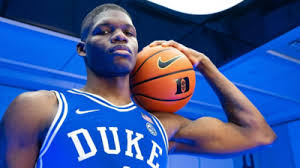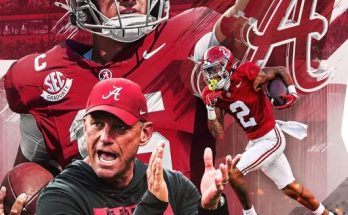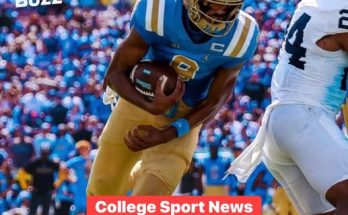Not long ago, Duke University found itself facing an offseason of sweeping change. The entire starting five of the Blue Devils declared for the NBA Draft, leaving head coach Jon Scheyer and his staff scrambling to retool a roster that just months earlier had Final Four aspirations. In today’s world of college basketball, the transfer portal has become the great equalizer—a chaotic marketplace where dreams are reshaped, and rosters are rebuilt overnight. Duke, never one to shy away from a challenge, entered the portal with urgency and came out with what looked like a series of wise, forward-thinking acquisitions.
One name in particular seemed like a hidden gem ready to shine on the biggest stage: Cedric Coward. A 6-foot-6½ wing with a 7-foot-2 wingspan, a sweet shooting stroke, and a do-it-all approach, Coward was coming off a standout season at Washington State where he averaged 17.7 points per game. He wasn’t just a volume scorer either—his efficiency, poise, and defensive versatility made him look tailor-made for a starring role in Durham. For Duke, still reeling from the loss of Cooper Flagg, Tyrese Proctor, Mark Mitchell, Jared McCain, and Kyle Filipowski to the NBA, Coward seemed like the kind of plug-and-play transfer who could help keep the Blue Devils at the top of the ACC.
After an official visit to campus, Coward gave his verbal commitment to Duke, signaling what felt like the beginning of a new era. Fans welcomed the move, analysts praised Scheyer’s eye for talent, and social media buzzed with clips of Coward knocking down threes, locking up opponents, and gliding across the court with the calm demeanor of a veteran. But just as quickly as the fanbase started to pencil him into the starting five, the story took a dramatic and unexpected turn.
As it turns out, Coward might never wear the white and blue of Duke. Why? Because of what he did at the NBA Draft Combine in Chicago.
This year’s Combine turned out to be the perfect storm for Coward—a proving ground where he not only held his own but dominated. Simply put, he didn’t miss. The numbers from his workouts read like a video game stat line. In the shooting drills, Coward finished as the No. 7 overall shooter at the event, hitting 72 percent of his aggregate jumpers. That in itself is an impressive number. But it’s the context that makes it staggering. Coward knocked down 68 percent of his three-point attempts from deep, many of them off the dribble, under pressure, and during high-intensity sequences that mirrored game action. His long wingspan, massive hands, and mechanically-sound release combined to create one of the most translatable jump shots on display during the entire Combine.
Observers took note immediately. ESPN’s Jonathan Givony, one of the most respected draft analysts in the business, took to social media to sound the alarm. “6’6 ½ wing shot the ball well in drills (made 72% of his aggregate jumpers) and measured a 7’2 wingspan. Sounding increasingly unlikely he’ll step foot on campus in Durham,” Givony wrote on X, formerly Twitter. His post included footage of Coward drilling shot after shot in front of scouts, executives, and media members who seemed increasingly enthralled by the Washington State transfer.
It wasn’t just Givony. 247Sports’ Adam Finkelstein also weighed in, calling Coward’s week in Chicago “the biggest breakout performance of the entire Combine.” Finkelstein didn’t mince words: “Coward has helped himself more than anyone in Chicago. This is bad news for Duke. Sorry to break it, but Cedric Coward has some serious buzz.” In a matter of days, Coward went from being a high-impact college transfer to a legitimate first-round NBA prospect. Suddenly, the future that once looked destined to unfold in Cameron Indoor Stadium may be headed straight to the bright lights of the NBA.
When asked directly about his plans, Coward didn’t dance around the subject. “I’m 100% focused on the draft,” he told reporters, flashing a confidence that echoed throughout the gym. “I’m taking it day by day, but I’m here to prove I belong.” And prove it he did. One scout reportedly said Coward looked like “a young Bruce Bowen with a much better handle,” while another compared his shot mechanics to that of Klay Thompson. Whether or not those comparisons ultimately prove accurate, one thing is certain: Coward’s performance was too good to ignore.
For those unfamiliar with his journey, Coward’s rise might seem sudden. But those who have followed his path know it’s a testament to persistence, belief, and relentless work ethic. He began his college career at Division III Eastern Washington State—far from the spotlight, the NBA hype, and the blue-blood recruiting battles. His talent eventually earned him a spot at Washington State, where he quickly made his presence known. He was never a stat-chaser, but he filled every column of the box score. He rebounded, passed, defended multiple positions, and most importantly, hit big-time shots in crunch time. His evolution from mid-major standout to NBA hopeful is the kind of story that keeps scouts coming back to the Combine every year.
Now, the question becomes: what’s next?
If Coward hears his name called in the first round of the NBA Draft—and that’s looking more and more likely with each passing day—he’s almost certainly staying in the draft. First-round picks come with guaranteed contracts, immediate paychecks, and the opportunity to develop within an NBA system. While Duke offers tradition, exposure, and an unparalleled college experience, it doesn’t offer the kind of financial security that comes with hearing your name called by Adam Silver on draft night.
That puts Duke in a tricky spot. They’ve already planned around Coward. He was expected to be a primary scoring option and a defensive anchor on the wing. Without him, the Blue Devils will have to adjust once again—and potentially dip back into the portal if another player becomes available. Fortunately, Scheyer and his staff have shown they can pivot quickly, but replacing a player of Coward’s caliber won’t be easy. The hope was that he would bridge the gap between a young, inexperienced roster and another deep tournament run. Now that bridge might never be built.
Still, it’s hard to root against a player like Coward. His journey is one of defying the odds, betting on himself, and rising to every challenge thrown his way. For fans of college basketball, it’s bittersweet. On one hand, Duke may never get to see what he could’ve done in the ACC. On the other, it’s thrilling to watch a player seize his moment and leap toward a dream he’s worked so long to achieve.
Whether Coward chooses to return to college basketball or begins his professional career this summer, his Combine performance has already left a lasting impact. He has forced scouts, executives, and fans alike to take notice—and that in itself is a massive win. For now, Duke will wait and hope, but all signs point to Coward’s next jersey reading “NBA” instead of “Duke.”
The portal giveth, and sometimes, the Combine taketh away.



